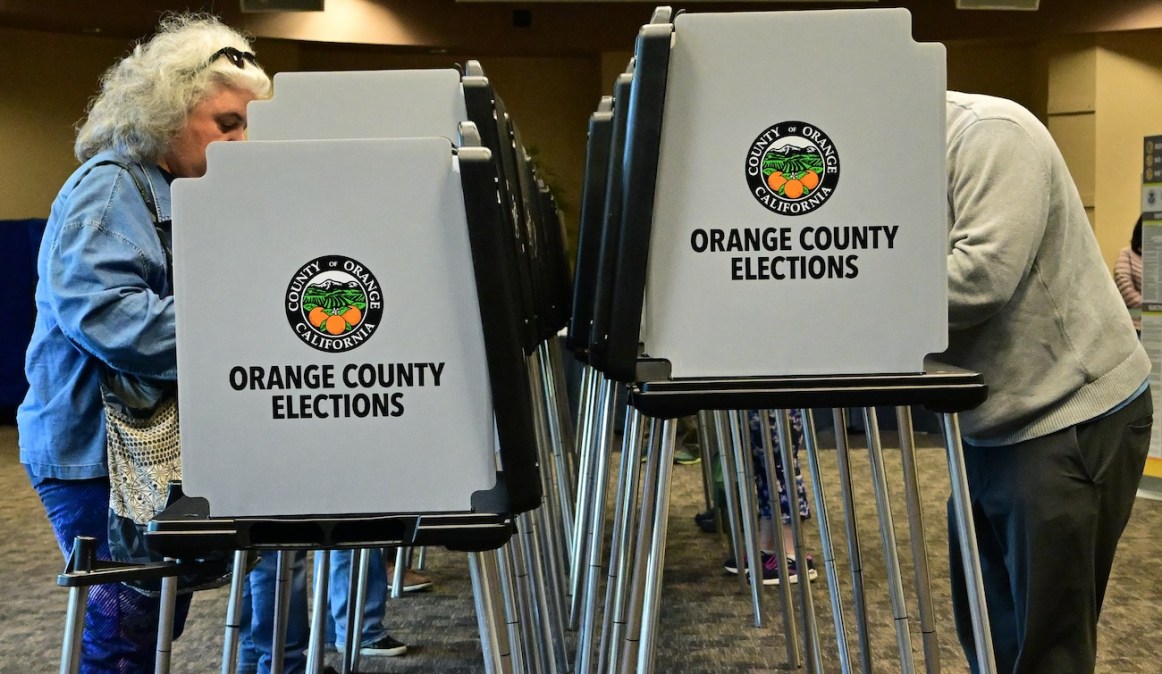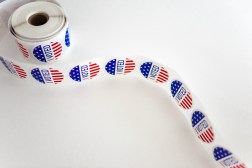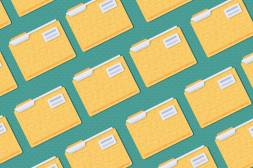Local election offices tap map data to boost voter turnout and trust

To bring greater transparency, convenience and trust to the voting process this election cycle, some election officials are turning to mapping technologies to get real-time data into the hands of the public.
The election boards in St. Louis County, Missouri, and Orange County, California, are among those using Esri’s ArcGIS software to enhance how they manage the election. Specifically, they’re using data to power dashboards that can help voters make better decisions about how and when to vote.
And with scrutiny being placed on election processes this voting cycle — partially because of an increasingly suspicious and angry electorate — election officials are hoping the availability of information will help combat worries caused by misinformation and a lack of trust in the election process.
In St. Louis County, Missouri’s largest county, the election office uses Esri’s software to share voting wait times at polling places, so voters can decide when to go vote. The data is made available on Election Day via the county’s voting web app.
Rick Stream, the Republican director of elections for St. Louis County, said the county had about 541,000 voters in the 2020 presidential election, adding that the tally was a “record percentage turnout.” Eric Fey, the county’s Democratic director of elections, said that was the first election cycle in which St. Louis County offered real-time information about waits at polling locations.
“We try to have a high-school student at every polling location in the county, if not more than one. And in addition to other things, they have a cell phone, and they simply just kind of count the number of people in line every 30 minutes or so, and they put that into the app, hit submit and then it populates that public-facing web app,” Fey said. “That’s been super popular. In 2020, that app itself I think it received over 400,000 hits just on Election Day.”
“Actually, it was more than the people who voted on Election Day. We had 320,000 people vote on Election Day, but you can tell people were checking it constantly,” Stream added. “My daughter, I know, checked it three or four times before she went to vote. So it’s a good tool, people love it.”
Fey said the app can help increase voter turnout because long wait times can deter voters.
“I think one of the major — if not the most major — reasons people don’t vote on Election Day is because the line’s too long. They don’t want to wait, they can’t wait, something’s happening in their family that they can’t wait a half hour,” Fey said.
‘Sense of security’
It also helps that in 2020 — and partially as a result of the COVID-19 pandemic — a new state law allowed voters to use polling locations in any of the county’s more than 900 precincts, regardless of their assigned locations, Stream said.
The county also uses Esri’s 123Survey app, which allows poll workers use to check preparation items off their lists, intended to establish public trust in the process. The lists include a host of oversight items, like ensuring the seals on voting equipment is intact, ensuring serial numbers match those on seals placed by election officials who delivered the equipment and that the count on the ballot scanner is zero.
Fey said it was just two years ago that poll workers were using paper checklists.
“If something wasn’t right, maybe they would — it was very rare that anything wasn’t correct — but on the off chance that it was, maybe they would set it aside, and when they weren’t busy, maybe at 10, 11 o’clock in the morning, they would call us and say, ‘Oh yeah, by the way, the one electronic poll book, the serial number was off by one number, so we didn’t want to use it,'” Fey said.
Now that information is loaded into a map, where election officials can view the locations of any problems.
“It gives us a greater sense of security and just a better peace of mind that everything is accounted for, and there’s not anything happening out in the field that we don’t know about,” Fey said.
The Survey123 app also allows election officials to track the locations of ballot collection teams in real time as they gather vote-by-mail ballots. This is one of the ways election workers in Orange County are using the Esri software — each of the 10 ballot collection teams are tracked on ballot collection routes by cellular location data, and the teams can note if there’s a disturbance with a drop box, such as graffiti.
“They have pictures of the site that’s transmitted back up to our command center, and they can see it live,” said Matthew Eimers, GIS supervisor for the Registrar of Voters Orange County. “They “[Ballot collection teams] don’t leave until they get cleared for each site, … and then they get cleared, and then go to the next site. And so we do all the mapping of what routes they take, because that’s different every time, and the app does it all.”
‘Hi, I’m Joe Smith’
Eimers said the registrar’s office can also track the polling equipment going out to the county’s 184 voting centers, which are the in-person voting locations that will open next week for local voters. The polling equipment, which includes thumb drives that are escorted by members of the Orange County Sheriff’s Office, can also be tracked on maps to and from the registrar’s main office.
And like in St. Louis County, voters in Orange County can visit any in-person voting center and receive the correct ballot. This is managed by software that cross references voters’ addresses.
“The election equipment is connected to our system live, and you can walk in there and say, ‘Hi, I’m Joe Smith, this is my personal information.’ They pull it up, and they can see who you are and if you voted. And that’s the most important thing, if you haven’t voted, then they can issue a ballot based on your ballot type. And for this election, we have over 574 different ballot types,” Eimer said.
This process is helpful for conditional voter registrations, which in California allows people to vote even if they missed the registration window. Eimer said those voters are likely the ones that require additional address verification, but once that process is complete and they’ve voted, their ballots are additionally verified by the Registrar of Voters using mapping data, and processed if all of the information is correct.
By making these processes more transparent, and offering up details such detailed election results, precinct demographic data and information about past elections through its public-facing ArcGIS tool Map Central, Orange County officials hope to combat worries about election fairness.
“The Orange County Registrar of Voters is committed to conducting fair, accurate, accessible, secure, and transparent elections,” Bob Page, Registrar of Voters of Orange County, California, told StateScoop in an emailed statement.
“We are aware some voters have concerns and questions about how we administer elections. As such, we approach transparency in many ways. We start by honestly answering voter questions,” Page continued. “And, we proactively share a vast amount of information about Orange County elections. The use of [geographic information system] tools is just one of the methods we use to secure elections and educate voters. We also execute a robust voter education and outreach program to pre-bunk misinformation.”






